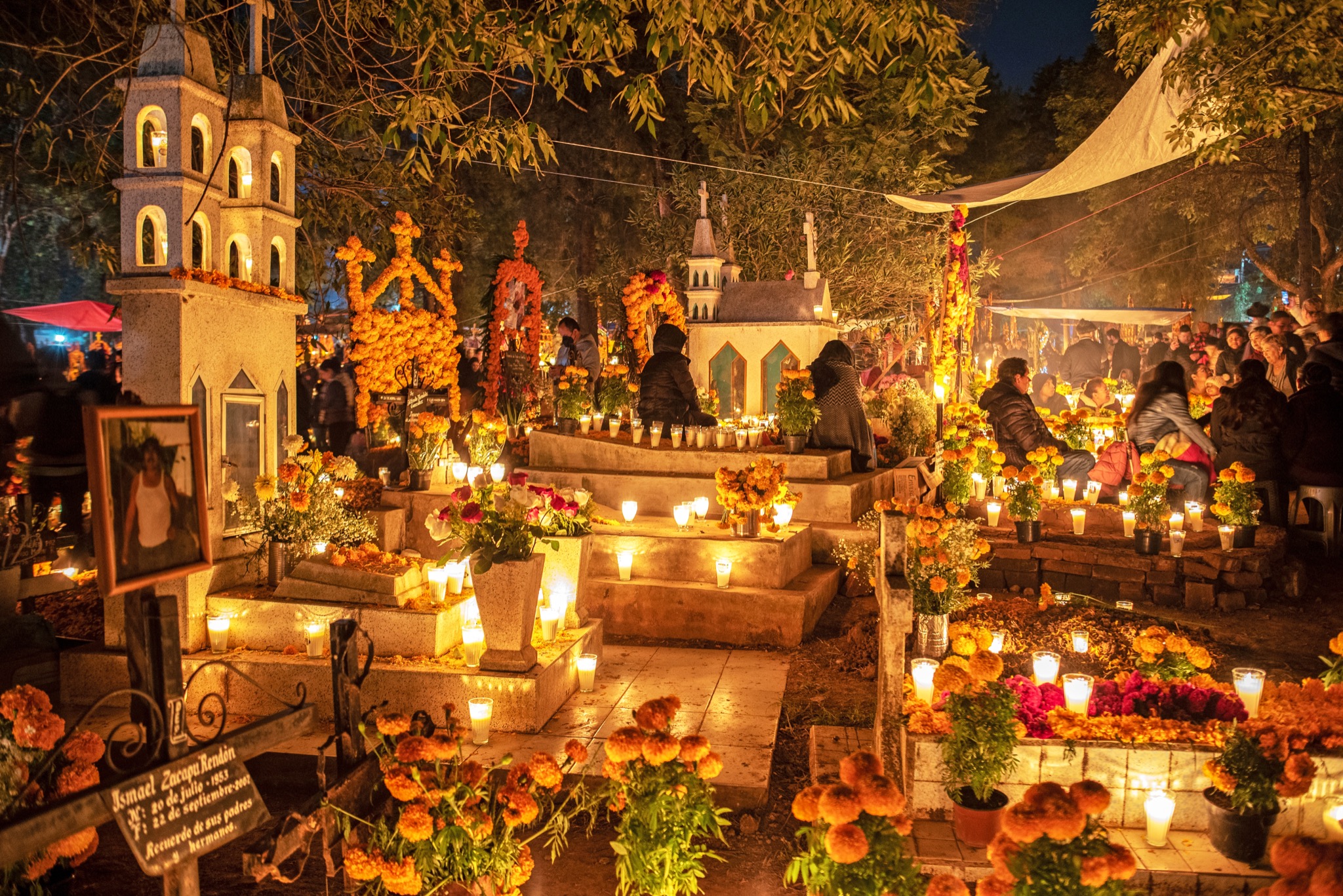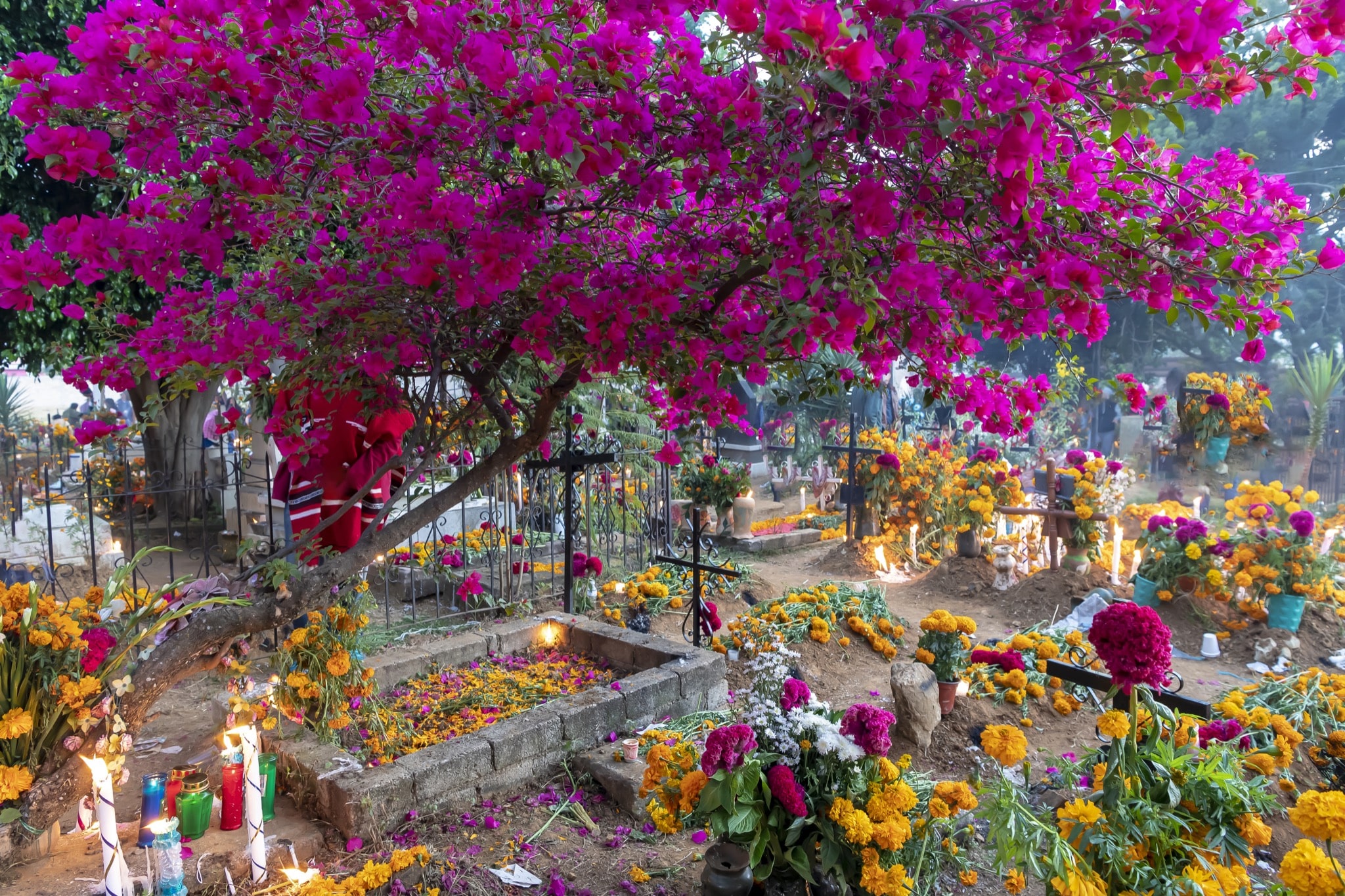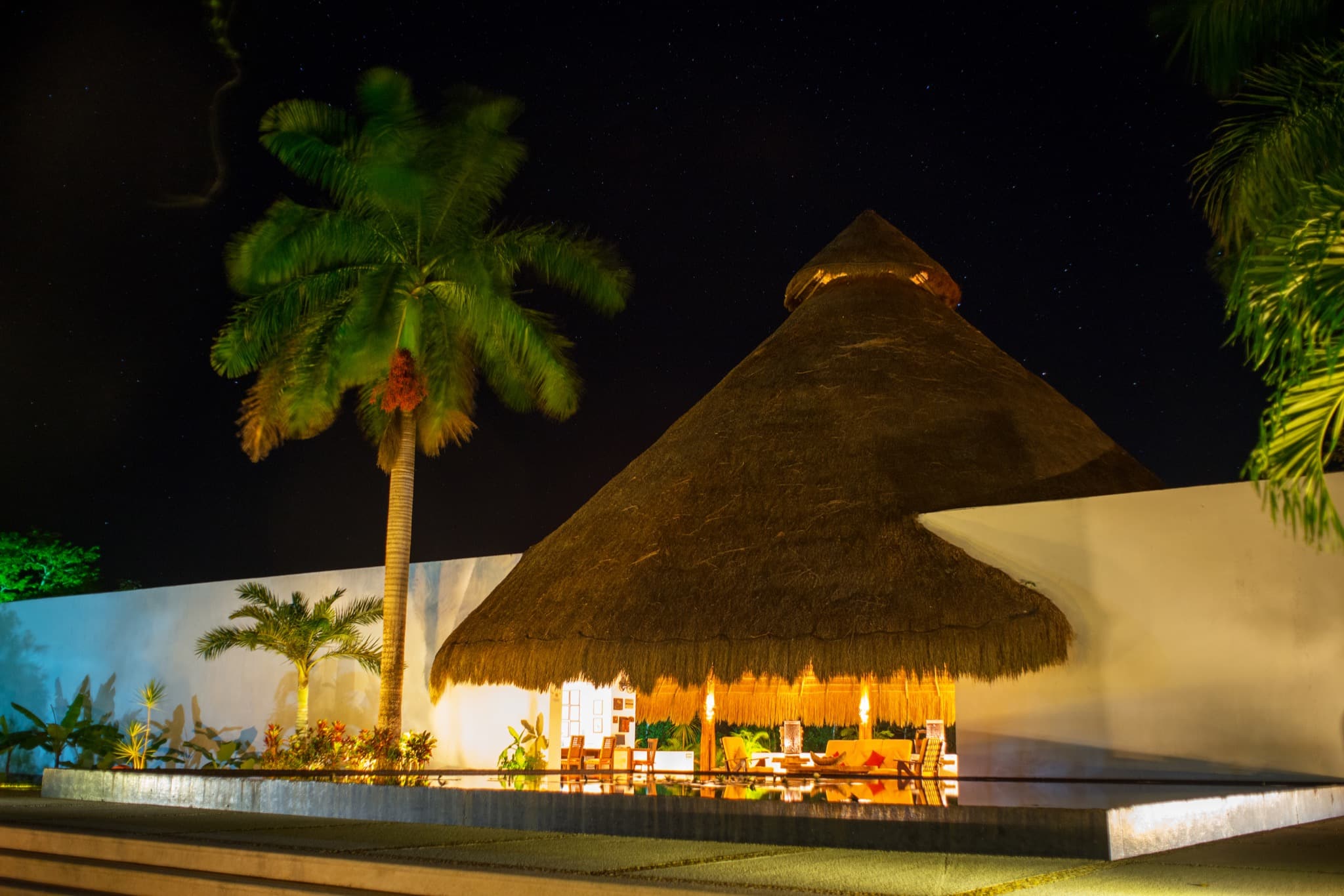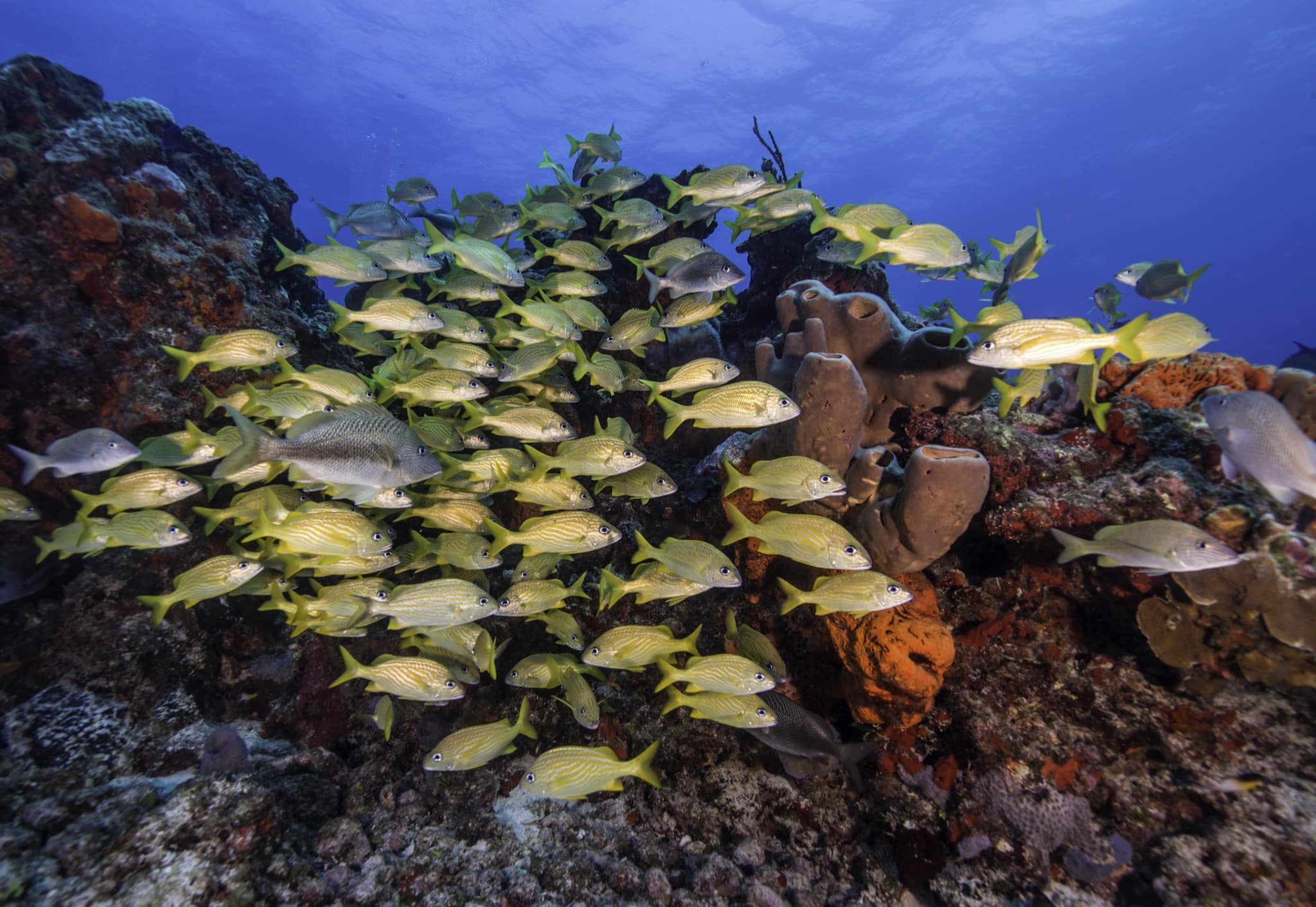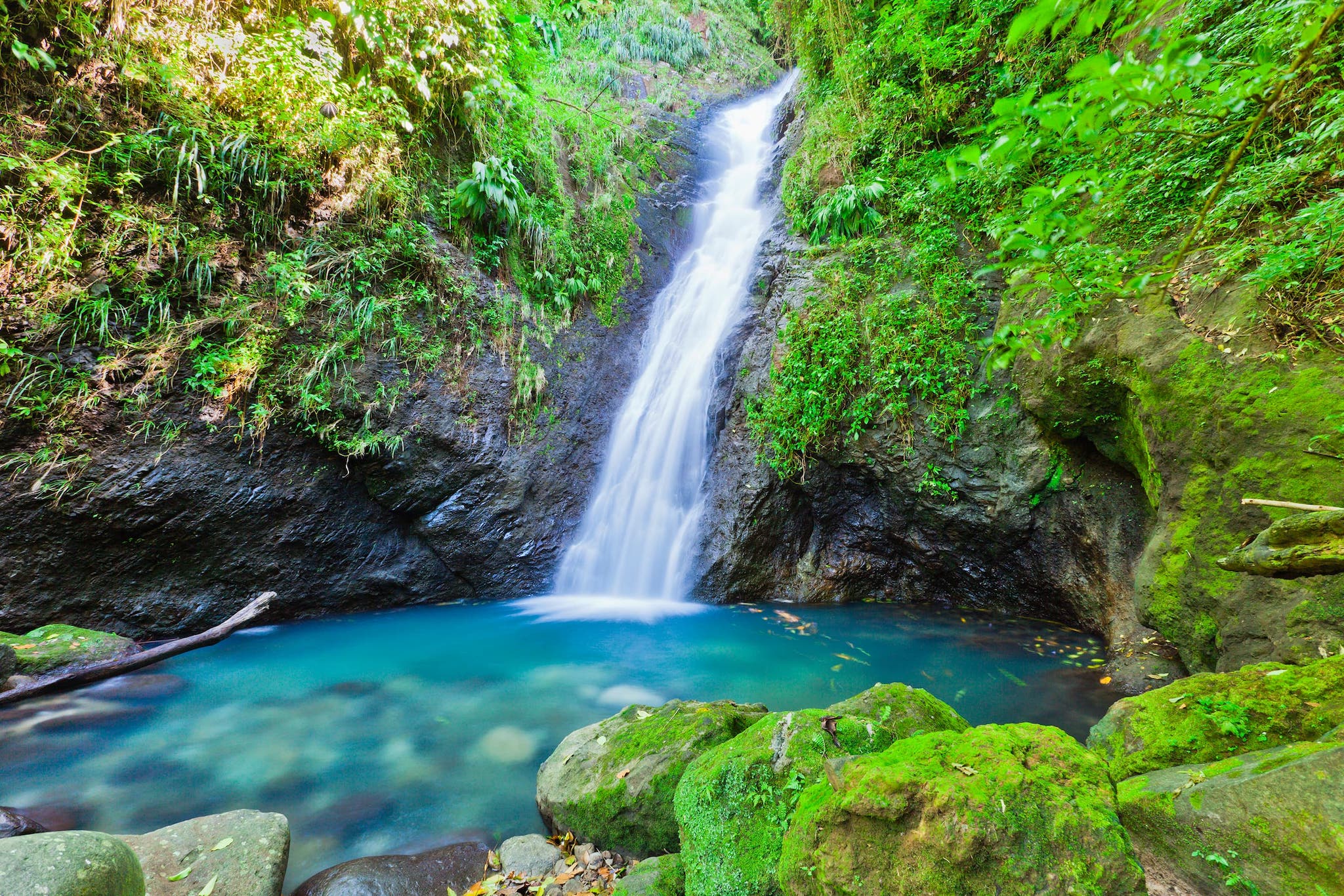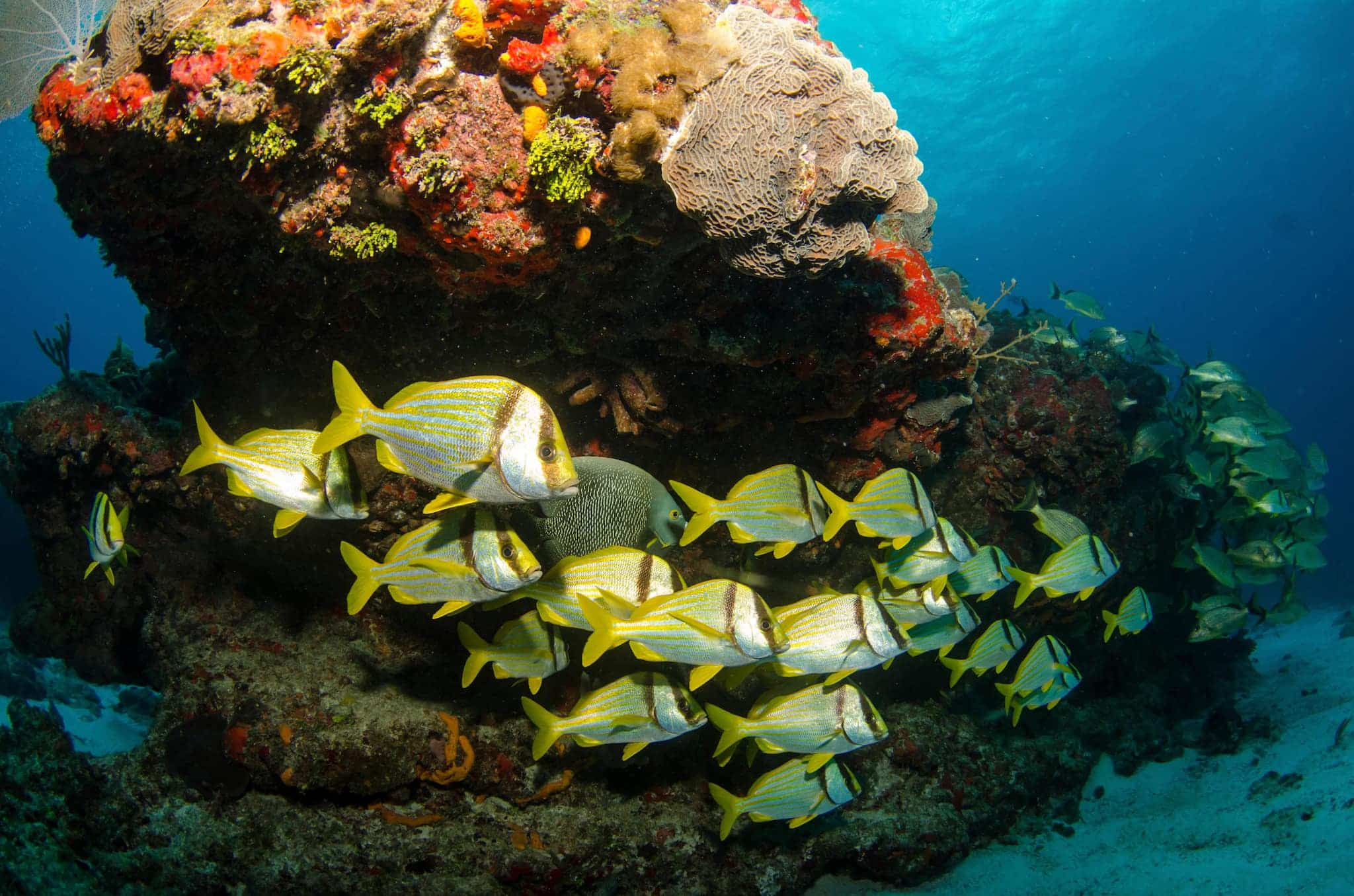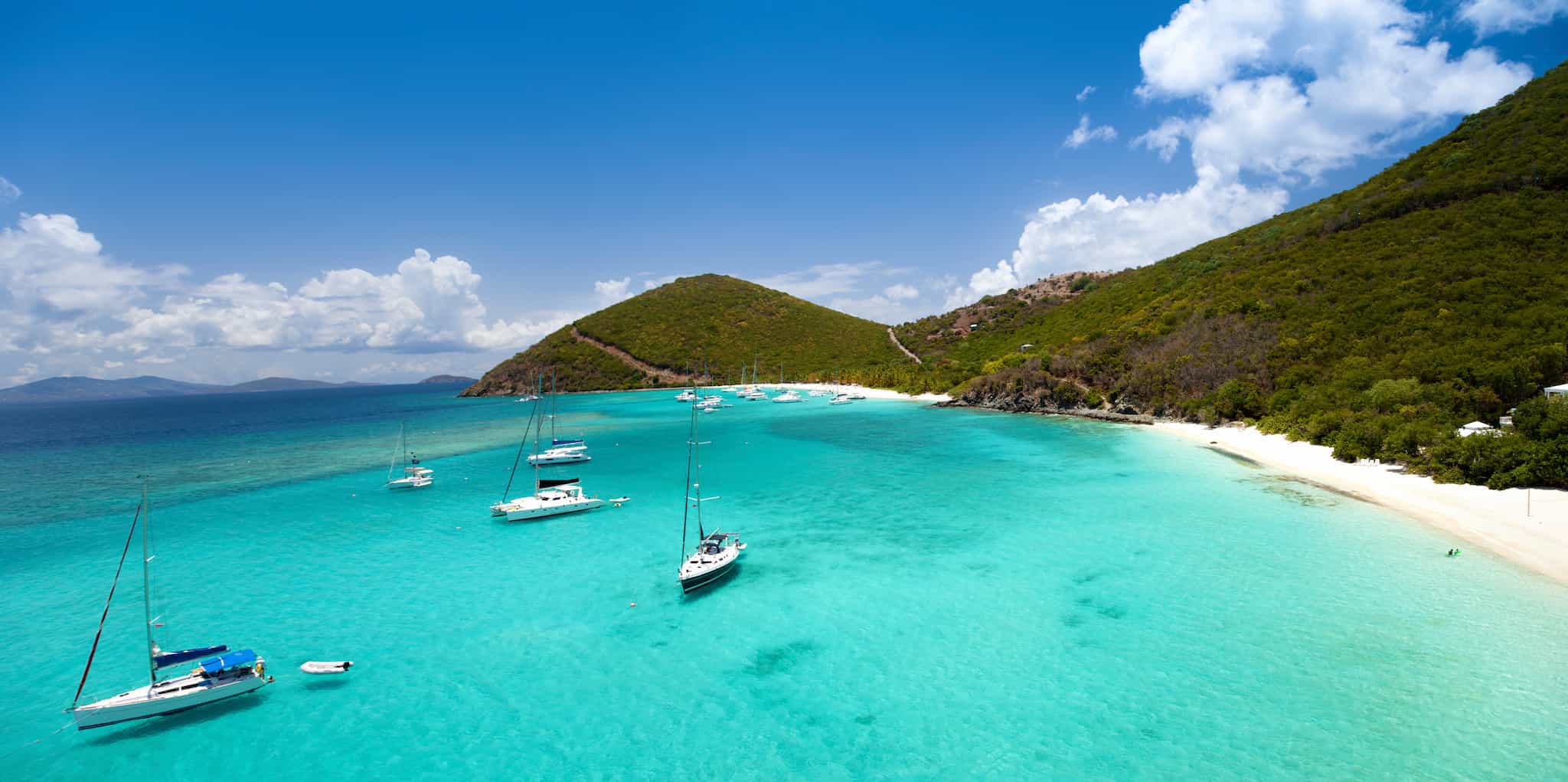Don’t let the skeleton masks and the calendar fool you. Mexico’s Day of the Dead, Día de los Muertos, has nothing to do with Halloween. Though the title says death, it’s not a time of spooks and fright and is instead a joyous celebration and remembrance of family members who have passed on. The origins of this memorial to the ancestors predate the arrival of the Spanish in Mexico and are rooted in the traditions of the Mexica Aztec peoples. Originally a month-long celebration in August, the dates were changed by Catholic missionaries looking to align traditional beliefs with All Saints Day.
Today, Día de los Muertos mixes aboriginal elements with European religious themes and has evolved into one of the country’s largest and most famous annual events. While it is celebrated in cities and villages across Mexico, specific destinations give travelers a unique and memorable take on the Day.
A Parade to Die For – Mexico City
Mexico City’s Day of the Dead Parade rivals a Hollywood production for size and showmanship. In fact, this over-the- top spectacle owes its recent origins to the opening scene of the 2015 James Bond film Specter. The lavish production created for the film not only captivated audiences worldwide but also caught the attention of Mexican Government officials who saw a unique opportunity for promotion. The following year, the city took a page from the film’s script and replicated the Desfile de Día de los Muertos procession. By 2019, this spectacle had lured more than 2.5 million visitors to the parade route. After a pause during the COVID-19 epidemic, the city is once again staging not one but a full week of festivals and parades during the week leading up to November 2.
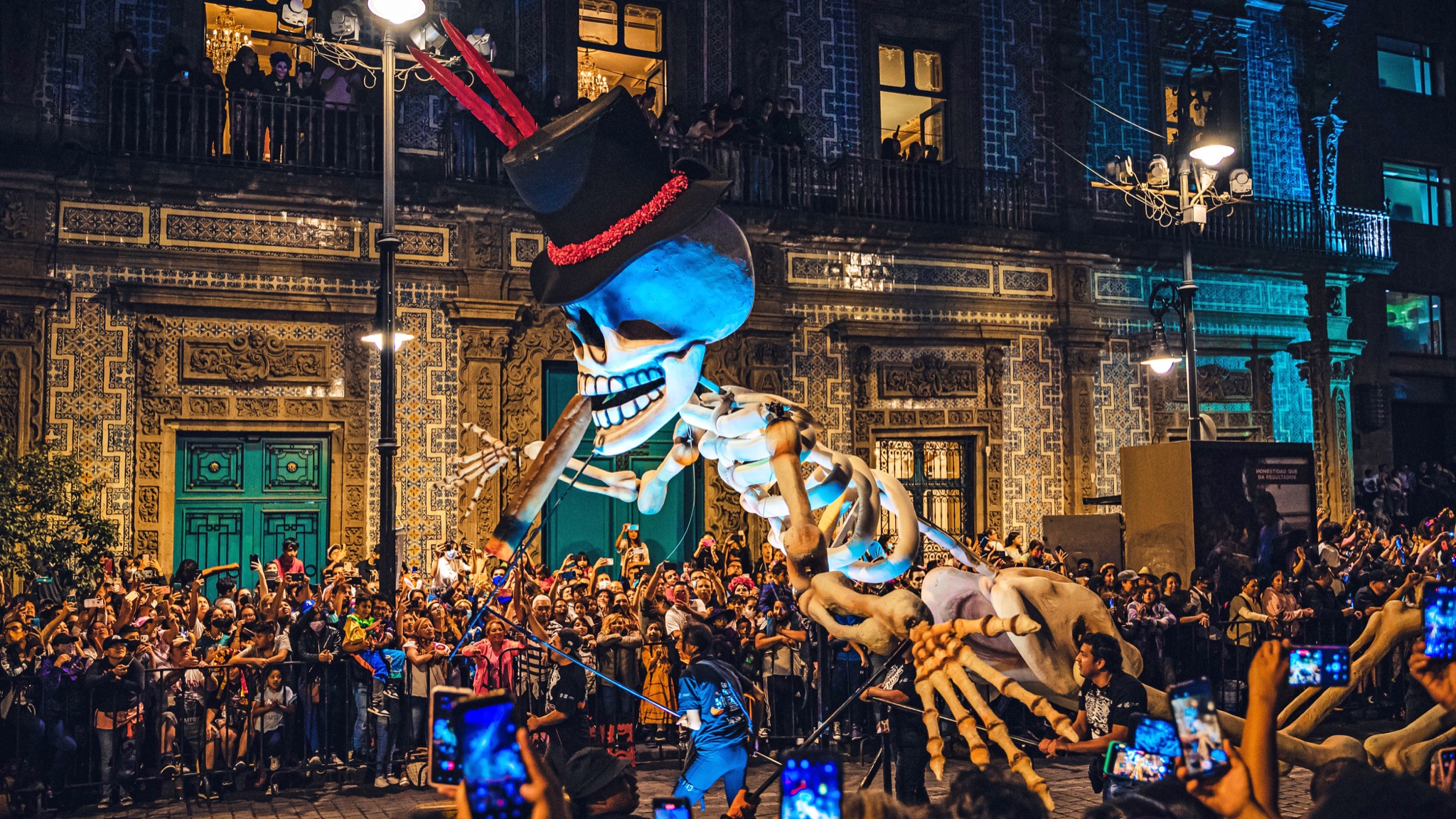
Candle Power – San Andrés Mixquíc
On the outskirts of Mexico City, the villagers of San Andrés Mixquíc stage lively traditional observations of Día de los Muertos that culminate in a nighttime vigil of stunning beauty. It begins with street fairs, traditional pre-Hispanic dances, and the creation of colorful altars made from sawdust rugs and cempasúchil flowers. Tens of thousands of onlookers come from Mexico City to take in the three-day festival leading up to the night of November 2, when villagers stage a candlelight procession to the church of San Andrés Mixquíc, where the graveyard is adorned with elaborate altars to departed relatives. Lit by thousands of glowing candles, the graveyard takes on an ethereal glow.
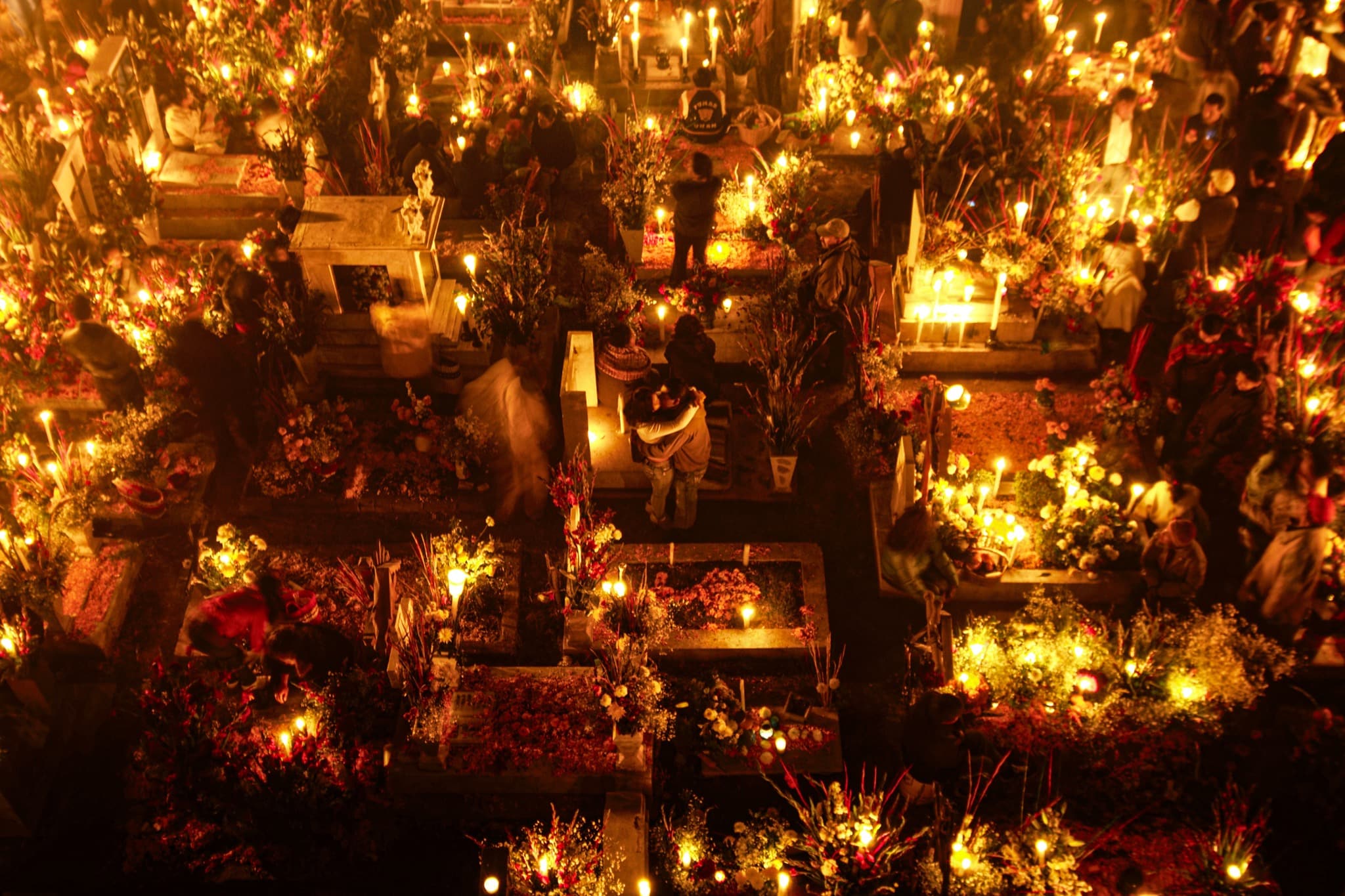
The Skeleton Crew – Aguascalientes
The city of Aguascalientes is the birthplace of Jose Guadalupe Posada, the artist who created La Calavera Catrina. This image of a grinning skeleton dressed in an elegant gown and flower-bedecked hat is the most recognized symbol of the Day of the Dead. The people of Aguascalientes celebrate this heritage during the Festival de las Calaveras?(Festival of Skulls), which is a week of traditional dance and musical performances, skeleton-themed art exhibitions, traditional food fairs, and a nighttime procession known as the Ilumínale los Pies al Muerto. The festival culminates in the Desfile de las Calaveras parade, where giant skulls and floats pass through streets lined by thousands of onlookers in skeleton masks and macabre face paint.
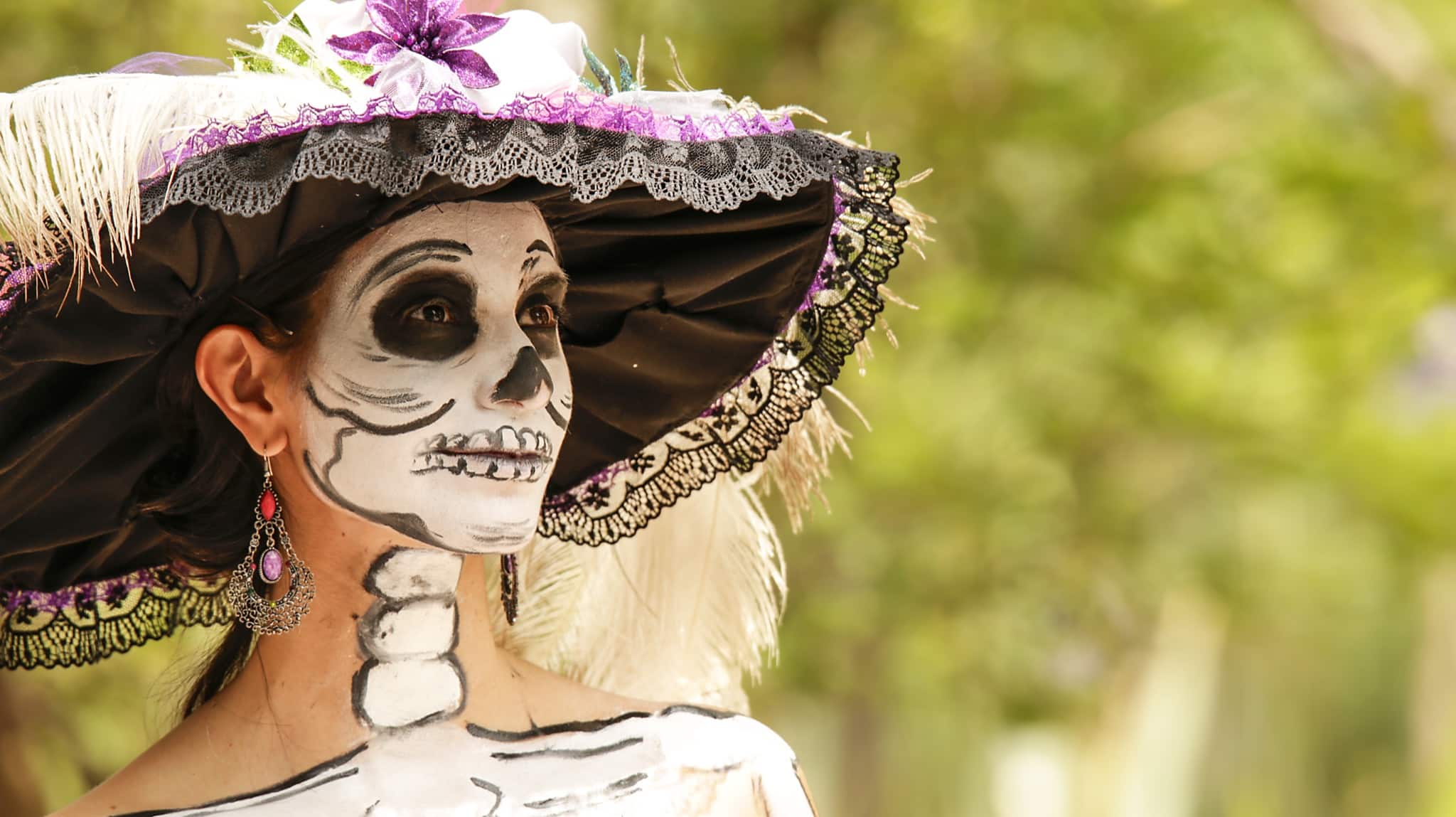
Offers In the Sand – Oaxaca
Residents of Oaxaca commemorate their departed relatives on Día de los Muertos by creating unique sand tapestries known as tapete de arena that cover courtyard patios and city streets. These elaborate but ultimately short-lived works of art are fabricated from sand, dyed sawdust, seeds, dried beans, flower petals, and powdered lime. Tapestries may feature religious themes or depict the festival’s signature Calavera skeletons, and they are often flanked by intricately decorated altars known as ofrendas – offerings that represent the four elements: water, wind, earth, and fire. In addition to traditional observations, there are cemetery vigils and candle processions. Oaxaca adds modern elements to the Day of the Dead with markets, elaborate costume parades, street parties, fireworks, and extraordinary confections known as sugar skulls.
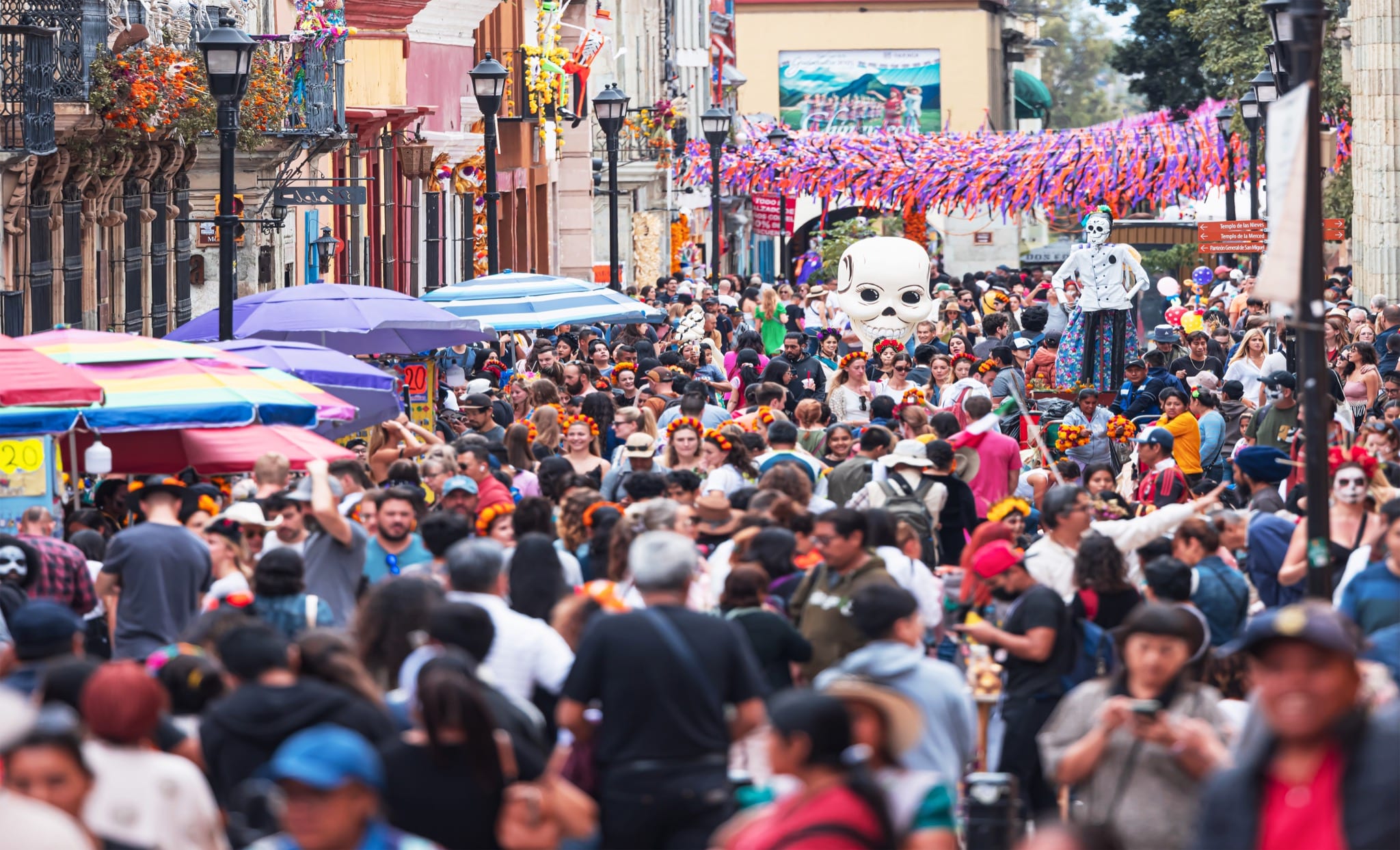
A Night to Remember – Michoacan
Sitting on the island of Janitzio in Lake Patzcuaro, the village of Michoacan is the setting for La Noche de Muertos – the Night of The Dead. This all-night vigil takes place on a hillside graveyard on the eve of the Day of the Dead, drawing pilgrims from the surrounding Pátzcuaro region. Travelers are ferried to the island by boat, and as the sun sets, a spectacle unfolds: a flotilla of candle-lit boats converge on the island. It soon becomes a packed scene ashore, as more than thousands of spectators join locals coming to pay their respects to the departed. Many make a night of it and camp on hillside plots near the cemetery.
